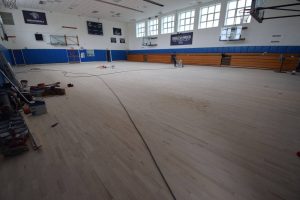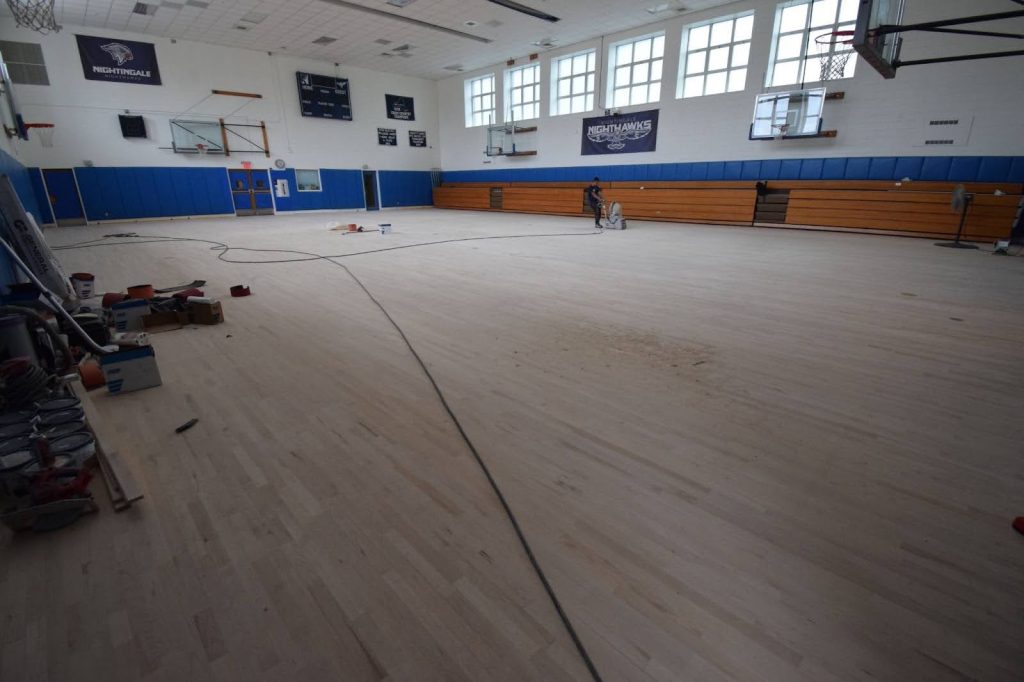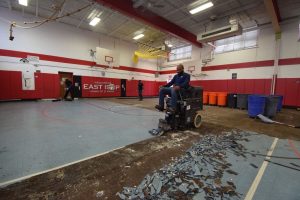In a commercial setting, flooring does far more than support foot traffic; it plays a vital role in safety, performance, and compliance. Over time, even the most durable gym floors wear down. But what are some unsafe gym flooring signs to look out for?
Failing to address unsafe gym flooring signs can lead to injuries, liabilities, and costly interruptions. Below are the most common red flags that indicate your athletic flooring may no longer be safe to play on.
Visible Cracks, Buckling, or Warping
Whether you have VCT, LVT, rubber, or epoxy flooring, any surface distortion like buckled tiles, peeling corners, or warped sections is a serious warning. These imperfections aren’t just cosmetic; they create trip hazards, damage equipment, and often point to deeper problems like moisture infiltration or subfloor failure.
If you notice uneven areas, it’s time to evaluate the entire floor system for safety concerns.
Water Damage or Moisture Issues
Stains, persistent damp spots, musty odors, or mold growth are clear indicators your flooring has been compromised. Water damage can weaken adhesive bonds and degrade materials, making your gym floors slippery and unsanitary.
This is especially dangerous in locker rooms, weight rooms, and entryways. Upgrading to seamless or non-porous surfaces can improve hygiene and long-term performance.
Constant Cleaning, Minimal Results
If your floor still looks dirty even after thorough cleaning, the surface may be too worn or porous to remain sanitary. This is a common issue with aging athletic flooring that’s past the point of restoration.
Worn floors not only look unprofessional they can also fall out of compliance with safety and health regulations. This is a key unsafe gym flooring sign that a full replacement may be necessary.
Declining Slip Resistance
Gym floors are meant to provide traction and impact absorption. Over time, materials lose grip especially in high-traffic or moisture-prone zones. If athletes are slipping more frequently or if the surface feels smoother than it used to, that’s a serious red flag.
Outdated Safety or ADA Compliance
Safety standards evolve. A gym floor that met code 10 years ago may now fall short of today’s ADA, OSHA, or fire regulations. This includes proper transitions, slip resistance, visual/tactile indicators, and fire ratings.
If your facility has undergone renovations or hasn’t been audited in years it’s wise to assess your floors to stay compliant and avoid costly legal risks.
Frequent Temporary Repairs
If you’re constantly patching the same areas, you’re likely spending more on short-term fixes than a long-term solution. Recurring repairs often signal underlying damage that only a full replacement can resolve.
Replacing your commercial gym floor isn’t just an aesthetic upgrade it’s a proactive safety investment.
Don’t Ignore Unsafe Gym Flooring Signs
From student gyms to pro training centers, recognizing early unsafe gym flooring signs helps protect athletes, staff, and your bottom line. If you’re unsure about the condition of your floors, consider scheduling a professional assessment.
Let’s make your gym safer, one step at a time.



